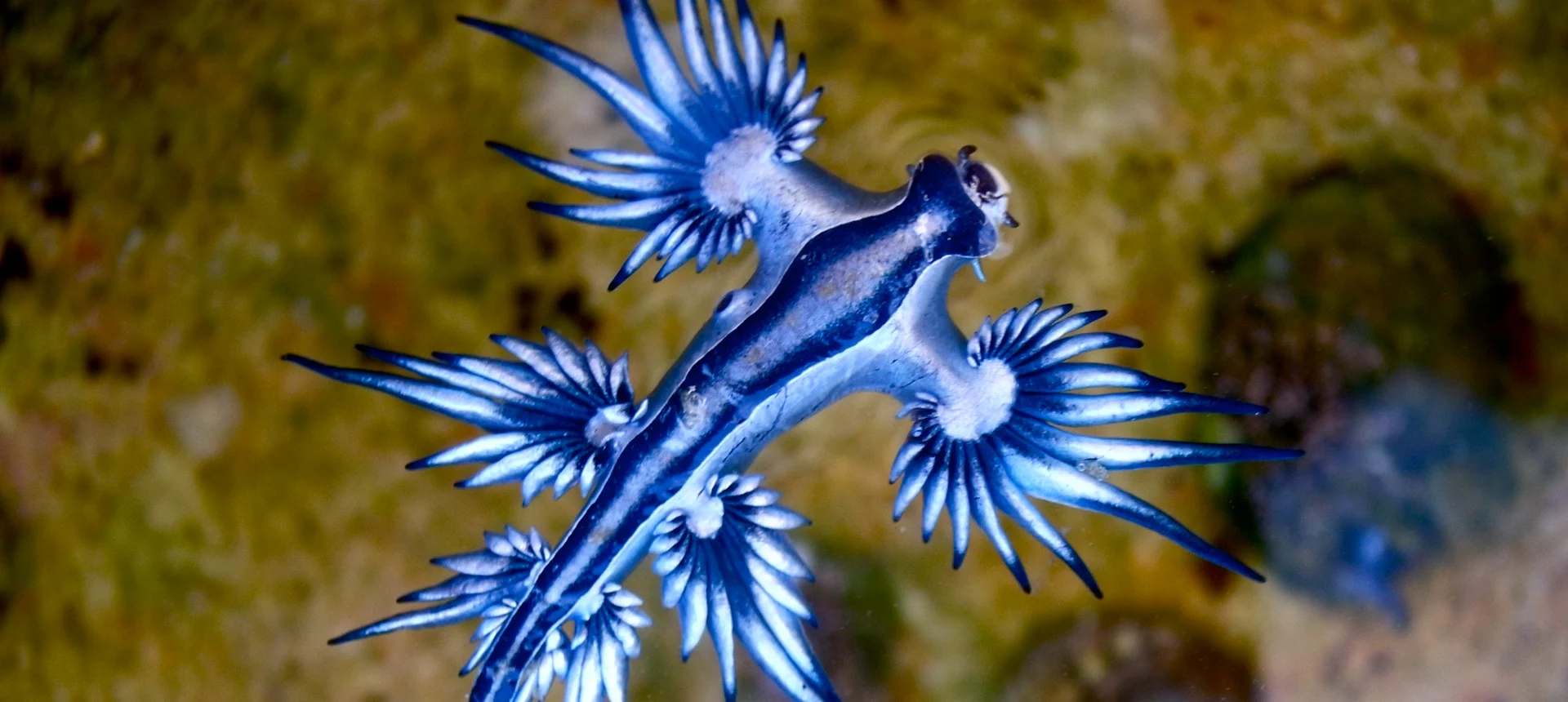
Beware these adorable but dangerous blue dragons this spring
A blue dragon sea slug is a sight to behold. Just don’t try to actually hold it.
Blue dragon sea slugs. Glaucus atlanticus. Floating sapphires. Call these curiously cute little creatures whatever you’d like—just don’t call them your friend. They won’t love you back, and it’s a rejection that’ll sting like mad.
Visitors to Texas beaches may soon learn this painful lesson as these small and mesmerizing sea creatures wash up on the state’s coastline.
DON’T MISS: Invasive 'vampire fish' populations spiking in the Great Lakes
Danger wrapped in an adorable package
Our oceans are full of beautiful creatures that artfully hide their dangerous defense mechanisms. A shark’s teeth hold few secrets, but a cone snail’s remarkable shell patterns offer no hint of the deadly capabilities lurking within.
Blue dragon sea slugs fall in that latter category. The little creatures drift along on the ocean surface and occasionally wash up on the beach. Mid-March wind patterns can send these creatures toward the Texas coast just as spring breakers descend on the region.
These sea slugs are a few centimetres long and carry a gorgeous spectrum of blue colouring, speckles of rare jewels hidden in the surf and on the beach.
Comparisons to a dragon are apt given their unique and mythical appearance. Each of these little ocean creatures has six limbs that are adorned with numerous ribbon-like appendages known as cerata.
A painful diet
It’s these cerata that hold a dark secret. Blue dragon sea slugs can sting an unsuspecting victim with a potent venom that they harvest from an unusual source.
Much like a human may choose to dip their fries in mustard or put pineapple on their pizza, a blue dragon’s diet is also a bit unconventional.

A Portuguese Man o' War washed up on a beach. (Unsplash/Hansel Gonzalez)
RELATED: Experts encourage eating jellyfish to curb population explosion in Mediterranean
They have a taste for the tentacles of the highly venomous Portuguese Man o' War, according to a paper by Florida State University's Dr. Patrick Thomas Ottuso. The Portuguese Man o’ War is one of the most fearsome organisms for any beachgoer.
You are what you eat, it turns out, and gobbling up the venom-delivering cells in these wayward tentacles allows blue dragons to incorporate that venom into their own cerata.
Not only that, but the Harte Research Institute for Gulf of Mexico Studies warned in a Facebook post that blue dragons inflict a sting worse than a Portuguese Man o’ War’s due to the amount of concentrated venom they can unleash all at once.
Beware the sting
Any unfortunate person or animal that comes in contact with those dangly blue appendages runs the risk of feeling an exceptionally painful sting.
In addition to the intense pain, a victim may endure nausea, burning, swelling, and even discolouration that resembles scarring once the stung area heals.
MUST SEE: This jellyfish was the terror of the sea 500 million years ago
Some treatments can provide relief and shorten the duration of the pain inflicted by a blue dragon’s sting—largely by following the same steps one would use to treat an encounter with a Portuguese Man o’ War.
Researchers with the University of Hawaii found that rinsing a sting with vinegar reduces the venom’s potency. Applying a hot compress for nearly an hour may also help soothe the injured area.
WATCH: Heading to the beach? Here's how to find out if it's safe to swim
Header image by Sylke Rohrlach courtesy of Wikimedia Commons (CC BY-SA 2.0).










